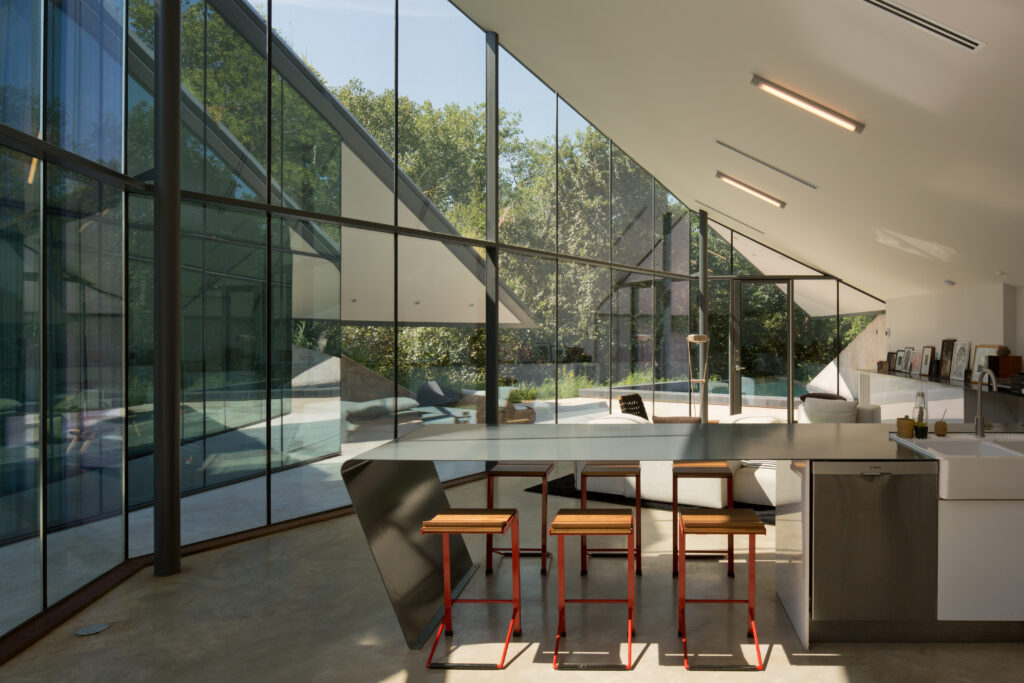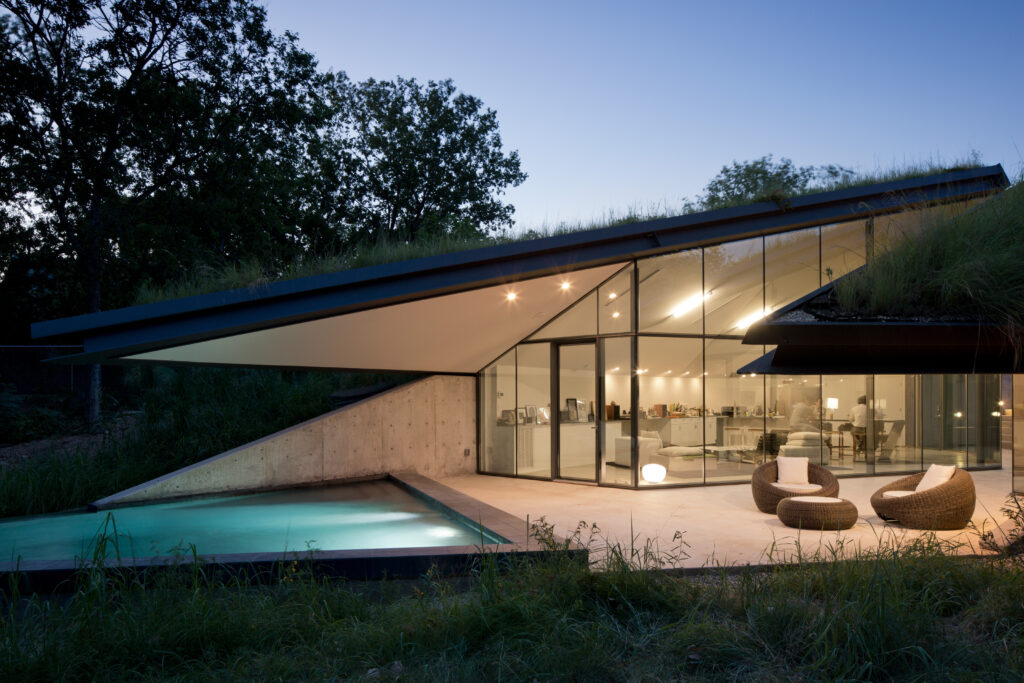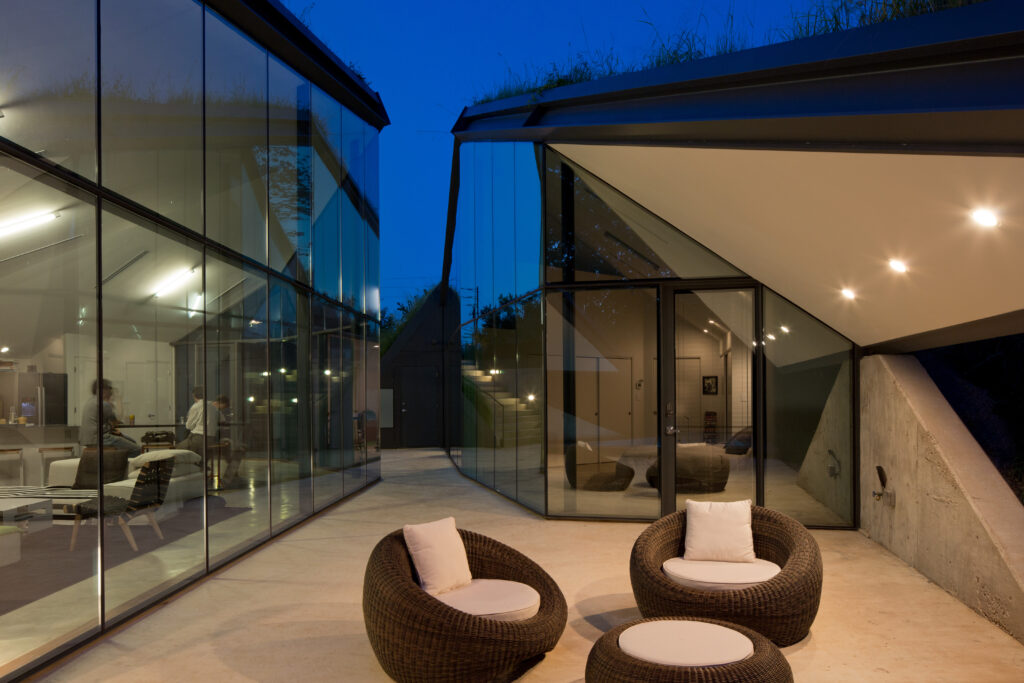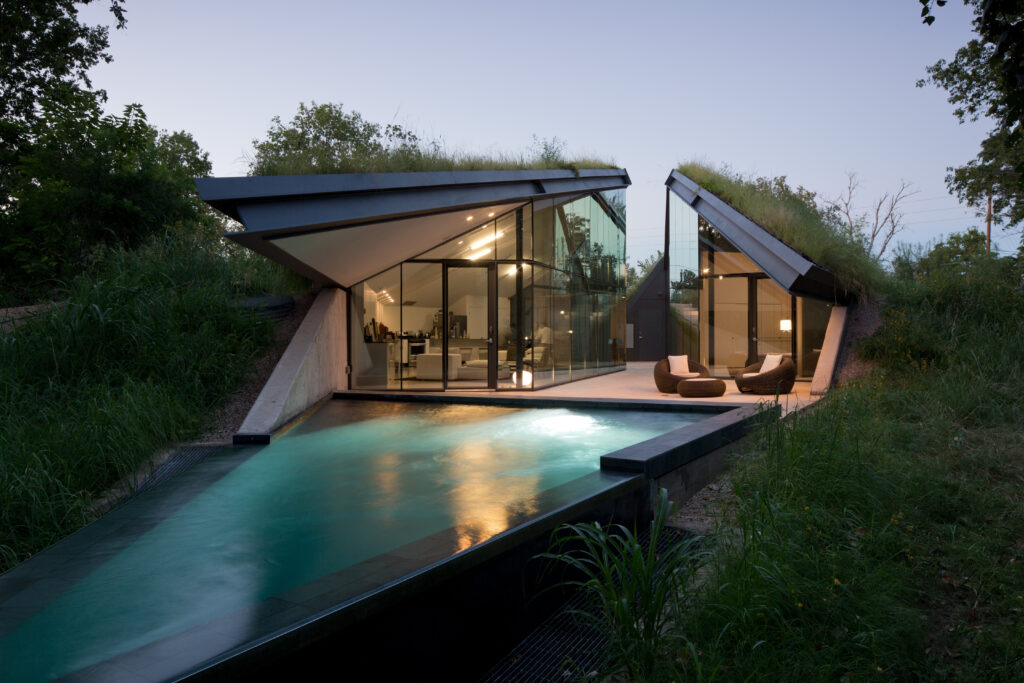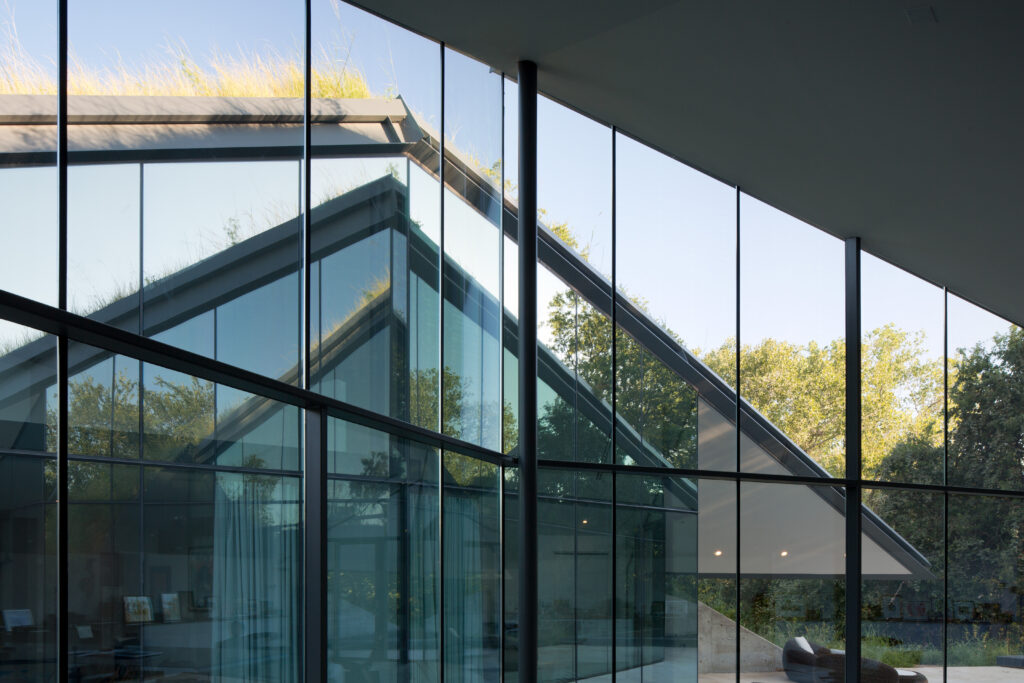Livin’ on the Edge: Peek Inside the Edgeland House Designed by Bercy Chen
Marrying the gap between urban and nature
When local fiction writer and business lawyer Christopher Brown was looking for a plot of land to build a home on with his son, he wanted to live close to the Colorado River below the Longhorn Dam, “a remarkably wild and undeveloped specimen of urban river, a precious natural asset too few people are even aware of.” It was in his search for his new home’s location that he discovered PODER (People Organized in Defense of Earth and Her Resources), a grassroots social justice organization that fights to clean up brownfield industrial sites in East Austin. (For reference, “brownfield” refers to land that is abandoned or underutilized due to pollution from industrial use.)

“This house would not exist had it not been for the environmental justice activism of PODER, which included removing the pipeline remnant from an old tank farm that is in our yard,” Brown says.
As an advocate for urban ecology and green spaces, co-founder of the Colorado River Conservancy, volunteer with PODER and board member with Ecology Action, Brown knew when it came time to build a home on this property that he wanted it to be harmonious with the world around him, not fight against it. While most homeowners yearn for that perfect curb appeal, Brown rebelled, deciding to “rethink the way a house can really live in nature.”

In his quest he turned to architecture and urban planning practice Bercy Chen Studio LP, who in turn dreamed up a modern re-interpretation of one of the oldest dwellings in North America, the Native American pit house, as a way to “heal the land and ameliorate the scars of the site’s industrial past.”
The usually sunken pit house takes advantage of the earth’s mass to maintain thermal temperatures throughout the year. Like this timeless abode, the Edgeland House’s insulated green roof (complete with native plants courtesy of the Lady Bird Wildflower Center) and seven-foot excavation into the ground keeps the home cool in the summer and warm in the winter. From the street, the home almost appears like a Hobbit home, carved into the earth and one with its surroundings — just as Brown wanted.
“When you walk toward the house, you have this abstracted berm of prairie in front of you. It feels like a piece of land art you would see from Michael Heizer or Robert Smithson in the 60s and 70s,” explains Founding Partner and Design Principal Thomas Bercy. “Then as you approach closer, you understand better — there’s a sense of discovery that’s initially hidden from you. It’s a moment that hopefully brings excitement and joy and spikes curiosity.”
When it comes to discussing what’s interesting about the home, Bercy has to laugh, and it’s totally understandable why. The Edgeland House, named for its “periphery of the urban edge in a transforming landscape,” is totally unique. From its sunken pit house structure and the living green roof to its use of shapes, including a triangular pool inspired by origami folds and brought to life by former Bercy Chen architectural designer and Brown’s now-wife Agustina Rodriguez, who is a public artist, sculptor, professor and the Chair of Programming for Big Medium, the home is truly one of a kind.

Brown and Rodriguez met through the project with Bercy Chen, and the married couple and their daughter have, for over a decade, lived in the Edgeland House, which is split into two separate pavilions: one for living (open kitchen and living room) and one for sleeping (two bedrooms and bathrooms). To get to each side, the dweller must pass through a connecting courtyard, thus further blurring the boundaries of nature and the man-made world.
“Sometimes while walking between rooms we encounter a coral snake on the patio, or a coyote or fox off there at the fence, or a raptor on the prowl just over our heads, or hear the calls of the barred owls down in the tall trees of the floodplain — at the same time as we can hear the traffic on the streets, and, in the daytime, the activity at the nearby factories,” Brown says. “Sadly, wild urban spaces like that, where wildlife can live in the margins of our dominion, never last in the face of relentless pressure for urban growth, and we can often sense how ephemeral it is, how endangered. But we do what we can to enjoy it, and protect it.”

